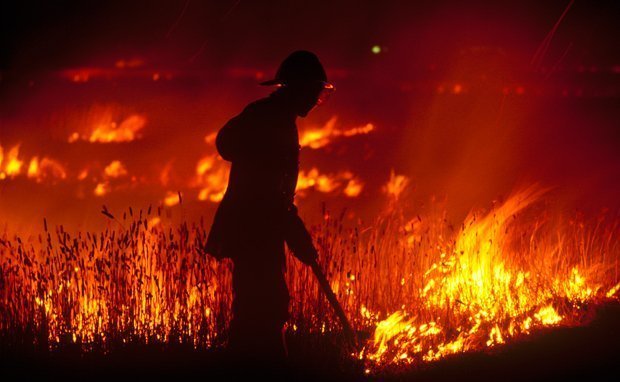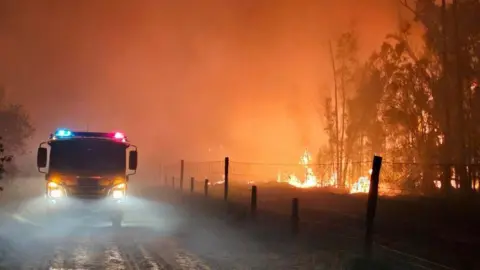Guarding Your Home: The Essential Duty of a BAL Report in Bushfire Readiness
Guarding Your Home: The Essential Duty of a BAL Report in Bushfire Readiness
Blog Article
How BAL Record Impacts Shrub Fire Protection Steps
In the world of bush fire security, the Building Strike Level (BAL) report stands as a critical device that substantially affects the safety and strength of homes in fire-prone locations - BAL Report. The influence of a BAL analysis extends much beyond plain paperwork; it offers as the cornerstone for determining the appropriate building standards and fire protection steps essential to mitigate the risks presented by bushfires. As areas face significantly extreme fire periods, understanding how the BAL report shapes these safety measures ends up being vital for policymakers, home builders, and property owners alike
Comprehending the Bushfire Assault Level

Significance of BAL Report Evaluation

In Addition, the BAL record assessment functions as a foundational action in abiding by lawful obligations and demands associated with bushfire security. Neighborhood councils and authorities commonly mandate the submission of a BAL report as component of the preparation and structure approval procedure to guarantee that buildings are appropriately secured against bushfire threats. Stopping working to conduct a detailed BAL record analysis can cause insufficient defense measures, leaving properties vulnerable to devastating bushfire events.
Building Standards Based on BAL
An extensive understanding of the Bushfire Attack Degree (BAL) makes it possible for homeowner to implement building and construction requirements tailored to their specific danger account. Building requirements based upon BAL are vital in reducing the influence of bushfires on properties. The BAL rating classifies the prospective risk a home faces during a bushfire on a scale from BAL-Low to BAL-FZ (Flame Zone) Each BAL degree matches to details construction demands outlined in the Australian Basic AS3959-2018 Construction of Buildings in Bushfire-Prone Areas. For circumstances, residential or commercial properties identified as BAL-Low may just require standard steps such as clearing particles and maintaining gardens, while those in greater BAL categories require even more robust measures like ash screens, fireproof products, and sealed home windows. Sticking to these building requirements not just enhances the architectural strength of the home but likewise improves the general safety of locals during a bushfire event. Consequently, property owners should very carefully consider their BAL ranking and comply with the equivalent building and construction requirements to effectively protect their passengers and homes.
Carrying Out Fire Protection Measures
With the structure of building criteria based upon Bushfire Strike Level (BAL) in place, the emphasis now changes in the direction of the sensible execution of fire security procedures to strengthen web link homes against bushfire threats. Implementing fire defense actions involves a combination of passive and active techniques to improve the strength of buildings in bushfire-prone areas. Passive measures consist of making use of fireproof structure materials, setting up ash guards on vents, securing spaces in walls and roofings, and preserving a clear space around the home without combustible plant life. Active steps include having firefighting tools easily offered, such as hoses and water pumps, along with producing a defendable room around the residential property by clearing plant life and having a well-maintained garden. Furthermore, establishing a discharge plan and guaranteeing all citizens understand emergency procedures are critical components of reliable fire protection steps. By incorporating both passive and energetic methods, buildings can dramatically reduce their vulnerability to bushfire cases and raise the safety and security of passengers.
Shielding Homes Versus Bushfires
Effectively safeguarding homes against the harmful impacts of bushfires needs a detailed and aggressive method to fire protection procedures. Property owners living in bushfire-prone locations have to prioritize the application of numerous techniques to improve their building's resilience against wildfires. One basic facet is creating a defensible area around the home by keeping a clear zone without combustible products. This consists of on a regular basis cutting plant life, removing dead plants, and making sure a secure distance between trees and structures. Setting up fireproof roof covering products can additionally considerably minimize the danger of coal assaults and straight fire contact. Furthermore, sealing vents and gaps to stop ash invasion, as well as including fireproof doors and home windows, can help strengthen the home's defense against bushfires. Purchasing a trustworthy water resource, index such as a well-maintained sprinkler system or a dedicated water tank, is critical for supplying water throughout fire emergencies - BAL Report. By accepting a proactive stance and integrating these safety measures, home owners can significantly enhance their opportunities of guarding their homes against bushfires.
Conclusion
To conclude, the Bushfire Assault Degree (BAL) report plays an essential duty in identifying the needed security procedures versus bushfires. By evaluating the BAL, construction standards can be customized to alleviate the dangers and make sure the safety and security of homes in fire-prone locations. Carrying out fire security measures based upon the BAL record is vital in protecting residential or commercial properties from possible bushfire threats. It is vital for home owners to prioritize BAL analyses and follow advised construction requirements to boost bushfire resilience.
In assessing bushfire threat to homes, understanding the Bushfire Assault Degree (BAL) is an essential component for implementing reliable security actions. Overall, a clear understanding of the Bushfire Attack Degree is crucial for implementing adequate protection measures and reducing the effect of bushfires on residential properties.

Report this page